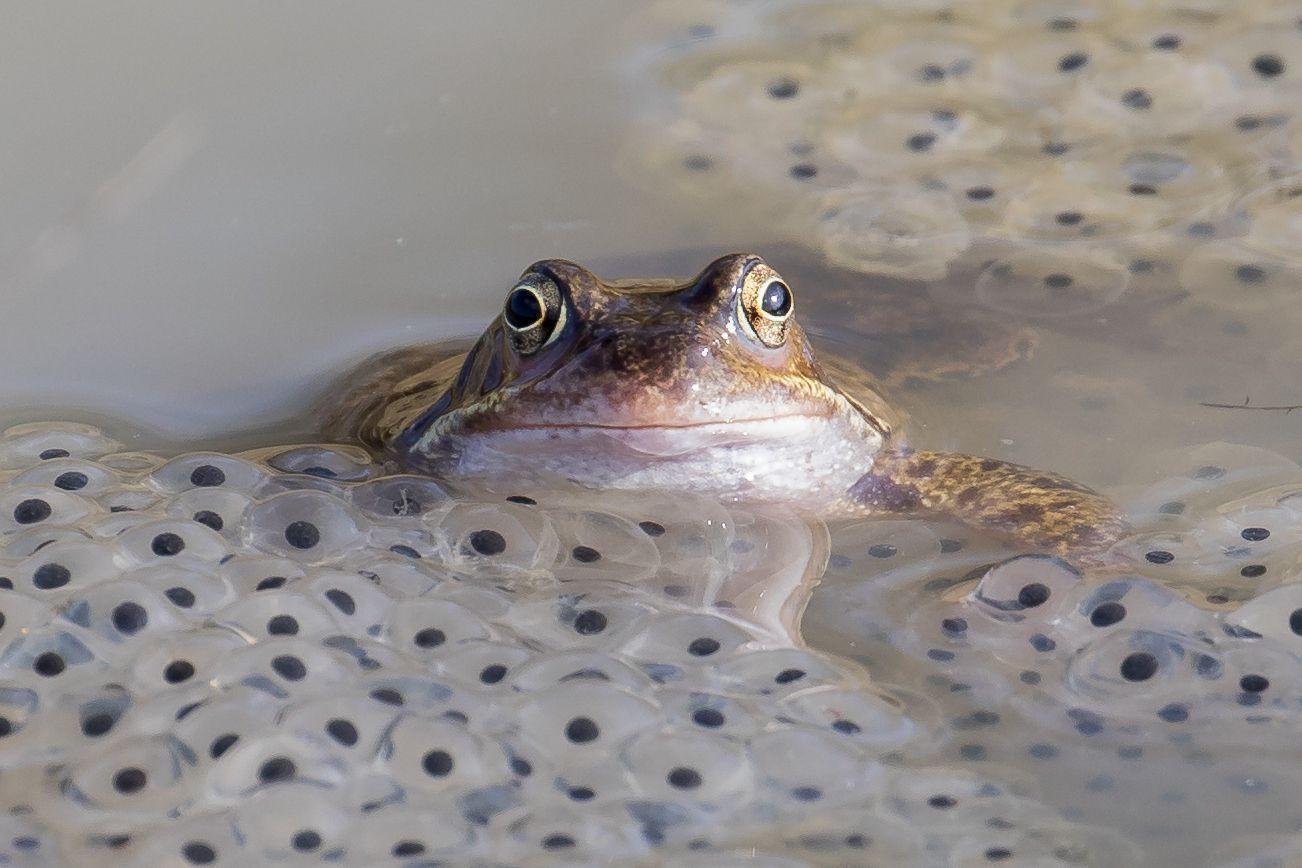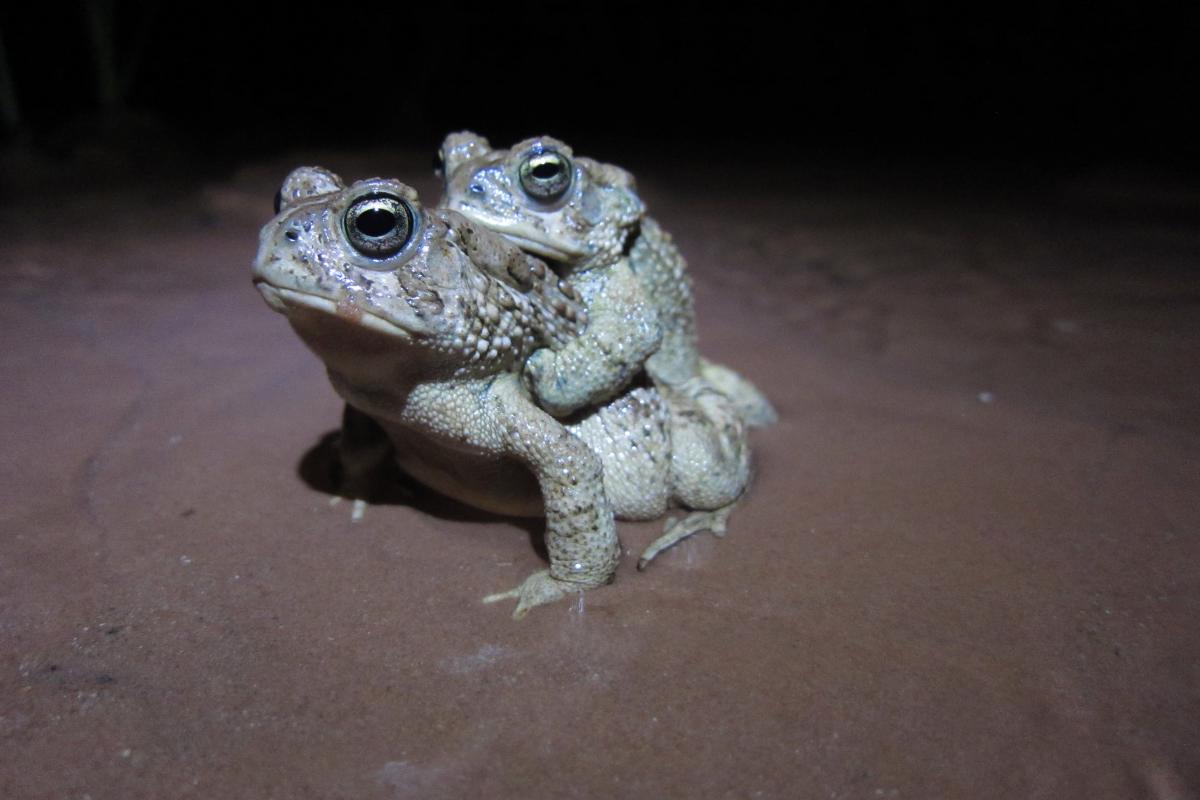How Do Frogs Reproduce? - Frog Reproduction


Frogs are amphibians that are present in a variety of ecosystems all over planet Earth. Encompassing the order Anura, they are the largest group of amphibians and their habitats range from tropical rainforests to subarctic regions. With over 6,000 individual species, it should be no surprise that frogs are incredibly diverse. This applies to their appearance, diet and even toxicity. It is also seen in their reproductive behaviors. While many frogs are semi-aquatic and lay their eggs in water, others are completely terrestrial and some don't even have a tadpole stage.
We discover more about the types of frog reproduction by asking how do frogs reproduce? In answering this question, we learn about the frog reproduction cycle, frog mating rituals and frog fertilization, among other important facts.
Reproductive anatomy of frogs
Before explaining how frogs reproduce, you should know that almost all frogs carry a marked sexual dimorphism. This means that there are notable physical differences between male and female frogs. In general, male frogs tend to be smaller and more flexible than females. The skin of male frogs also tends to be rougher.
While they may be smaller overall, males tend to have larger vocal sacs. This is because they call out for females to find a potential mate. Some males they develop small thumb pads on their feet. Known as nuptial pads, they allow the male to stimulate the egg release by a female. This can be very helpful when you are a slippery amphibian.
Although external anatomy can help with reproduction, it is the internal anatomy which actually results in fertilization. Male testes produce sperm and females produce eggs, the former gametes fertilizing the latter. Although these gametes are produced internally, most frogs carry out external fertilization. Only a minority of species fertilize their eggs internally.
This means all frogs reproduce sexually. No frogs are known to reproduce asexually. They all require male and female gametes to fertilize and form an embryo.
You can learn all about a frog's complete anatomy with our article on the body parts of a frog.
When do frogs reproduce?
How often a frog reproduces depends largely on the specific species and their respective environment. In general, when it comes to a frog's breeding season, most species wait for the warmer months of spring and summer before mating. In terms of frog species that live in tropical climates, where temperatures are constantly high, reproduction can take place at almost any time.
Frogs are also very sensitive to changes in their environment. While they will be able to withstand certain seasonal variations or periods of inclement weather, some changes are more damaging. Reports suggest that climate change is making some frogs reproduce earlier than usual, affecting larval development and metamorphosis[1].

How do frogs reproduce?
Understanding how frogs reproduce requires us to look at frog mating behaviors. A frog’s reproduction process begins with vocalizations by males to call females. The females then vocalize in response. After this, the male places himself onto the female with his legs, with the aim of stimulating egg spawning. This position is called amplexus.
As stated above, most frog reproduction and fertilization occurs externally. This means means that the eggs must be released by the female for the male to fertilize them with his sperm.
Male and female frog genitalia is housed within a frog’s body, but male frogs technically have no penis and females have no vagina. Instead, both release their sex gametes through holes located in their bodies known as cloacas. The amplexus embrace between frogs stimulates the female to release her eggs which she expels in the form of a gelatinous mass. The contractions from the female stimulate the male to spray the eggs with sperm, fertilizing them in the process.
Does a frog lay eggs?
Female frogs do indeed lay eggs. As we have explained above, the female frog usually lays her eggs before external fertilization by the male. In most frog species, the frog mating process is carried out in water, since eggs require high levels of moisture to avoid drying out. Some terrestrial frogs will deposit the eggs on land, but this will still need to be in a moisture-rich environment.
For the rare number of frog species that carry out internal fertilization, the process is fairly similar. Although they don't have a penis, the male frog joins his cloaca with the female's to deposit his sperm. The eggs are then fertilized internally. However, all frogs are types of oviparous animals. This means the frog embryos do not develop inside the mother. Even with internal fertilization, she will soon lay eggs which will develop and mature externally.
How many eggs do frogs lay?
The amount of eggs a frog lays in a single clutch varies considerably. This is most dependent on species. Some frogs can lay up to 1,000 eggs in a single spawn. Others will lay as few as 2, although this is uncommon. The American bullfrog (Lithobates catesbeianus) is known for laying particularly large clutches, with up to 20,000 eggs being laid during a single mating season.
The reason why frogs tend to have such large clutches of eggs is a probability game. The more eggs, the more young frogs are likely to develop and survive. What we refer to as frogspawn is the eggs which are spawned by the female. They are often covered in a jelly-like substance. This helps to protect the embryos from predation.

How are frogs born?
Once the frog fertilization process has been completed, the egg incubation period begins. These can vary in color including shades of white, dark gray or black. Although the birth of the tadpoles generally varies depending on the species and climatic conditions, most tadpoles are born between 2 and 9 days after fertilization.
After the incubation period, the tadpoles break the egg barrier until completely free in the water, by which they initiate their life cycle. When frogs are born, the adult frogs do everything possible to keep the hatchlings free from predators, such as fish to ensure tadpole survival. Despite this, many of these tadpoles are eaten by other animals.
Some frog species do not have a tadpole stage. They hatch as miniature adults. This is common in terrestrial frogs. They do not need to have a tail like a tadpole does since they do not live in water. For more about the tadpole life cycle, keep reading below.
Frog reproduction cycle
At birth, frogs are larvae. At this stage, they are completely aquatic and weigh only around 6 mg. Frog larvae have no mouth or tail, these only appear a few days later when the larvae form into tadpoles. Tadpoles weigh around 1 g and have tails and gills. Tadpoles feed on algae, plankton and different microorganisms found in water. As stated above, some frogs carry out direct development and bypass the tadpole stage.
The next step in frog metamorphosis is imago stage, at which time the tadpoles (after several weeks) increase in weight and begin to develop lungs and legs. Some weeks later, tadpoles begin to resemble adult frogs: eyelids, eardrums and the tongue begins to develop, allowing them to deploy and catch insects.
At this time, the frog can leave the water and begin terrestrial life, until the tail is detached in a process called apoptosis. Apoptosis defines the death of cells, as a part of development. In this stage, weight increases in most species. In general, most frog species reach sexual maturity at 8 months, although it can take some 3 years. You can learn more about the stages of frog metamorphosis with our related guide.
For more about the life cycle of a frog, we recommend watching this YouTube video shared below:

Atypical frog reproduction
The above description of a frog’s life cycle corresponds to what happens in most of the Anura order. However, frog reproduction may vary according to the species. For example, a species of poison frog (Epipedobates machalilla) spawns its eggs in the soil if it is sufficiently moist. After spawning, the male protects the eggs until the larvae hatch and after 19 days, the father transports the young on his back to the water to complete the life cycle.
Additionally, in the case of the Andean marsupial frog (Gastrotheca riobambae) during amplexo, the eggs are deposited in the mother's marsupium or pouch located in the dorsal area, where they can remain up to 120 days before emerging as tadpoles. These tadpoles are then released by the mother into the water to complete their development.
For more, we recommend reading our article where we discuss, what do frog tadpoles eat?
If you want to read similar articles to How Do Frogs Reproduce? - Frog Reproduction, we recommend you visit our Gestation category.
1. Benard M. F. (2015). Warmer winters reduce frog fecundity and shift breeding phenology, which consequently alters larval development and metamorphic timing. Global change biology, 21(3), 1058–1065.
https://doi.org/10.1111/gcb.12720







